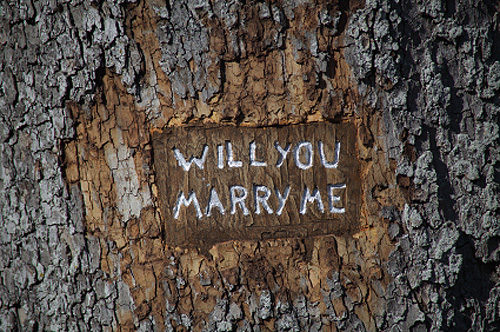…The awaited continuation of Eve’s wise words on how to best select the perfect ring for your loved one.
d. Private pleasures
I am very happy to add a romantic inscription within each ring: something to make one or both of you feel cherished, or perhaps some words that have a special meaning to just the two of you (in any language). I can hand-write your message on the inside of the band, and the inscription length would depend simply on how wide the ring is. There is no charge for this.

I like to know that for decades to come, the top of the ring with all of its diamonds will still proudly indicate: “Stay away! This woman is taken!” And maybe in 100 years, the next generation can still enjoy your little piece of history: an heirloom with a story inside! But, in addition to that, I think that there should also be something private: something that only the two of you know. This can be in the form of a small gem, perhaps your birthstone, hidden somewhere on the ring where she will be seeing it every day. Depending on how hard she works or plays physically, we can even have the palm-facing side of the ring carry tiny stones as well (which, by the way, aren’t very costly since they are small!) And certainly, decorative details and designs can always either follow around the ring, or remain just in the front. I have even created rings with a special symbol on the back only: totally private!
e. Some considerations on diamond choice
Regarding quality, I generally like for my diamonds to stay either at or above the VS clarity grade, as well as at or above the G color. While the D Flawless may seem exciting, their very inflated prices reflect their rarity…most of these diamonds end up in vaults rather than worn, anyway. The next grade, VVS (hardly any inclusions), is indeed attractive, but not inexpensive.
“Very Slight,” or VS, has a few miniscule inclusions; usually tiny pinpoints of carbon or small veils that still let brilliant light sparkle through. I think that these diamonds have the best cost/value aspect, and will both hold and increase in value as long as you stay within the color grade of G or better (the highest grade being D).
and will both hold and increase in value as long as you stay within the color grade of G or better (the highest grade being D).
Typically, I try to find a diamond with VS/G, sometimes VVS/G, or F/VS grade, or even E color if possible, and not too expensive. Color affects the price a bit more than clarity, since you can see color from across the room. Keep in mind that with clarity grades up to SI/1, any inclusions can only be seen with ten power magnification…beyond that, with SI/2 or I grades, they can be seen with the naked eye.
But very important also is how well-cut a diamond is: the difference is immediately seen when the artist who cut the facets has succeeded, as there are certain parameters to achieve, but he still has some leeway in the proportions. That is why a lot of the diamonds sold online are not very exciting: no one has paid attention to the cutting, and they often appear dull. They are not dancing with light, even though they hit all the points of the certification process, and are of the “correct” color and clarity. I work with a pair of cutters, a father and a son, and I can always recognize a diamond cut by the father– it dances!

When I know the diamond will be set in prongs, where its girdle will be exposed, I also look at how the diamond’s girdle (where top meets bottom) is cut. It should not be too thin, and I much prefer for the girdle itself to be faceted if at all possible. With other, more secure types of settings, where the edge is covered by gold (like a bezel setting) it of course is not as essential.
Also, the diamond market is always fluctuating to some extent: some weeks it is possible to get a diamond in the 1.25 range for the same price per carat as a diamond that is only 1.05 carat…other times, cost per carat will be similar to those in the 1.4-1.5 carat range. It mostly depends on Asia now, as they are increasingly buying larger diamonds, but also on the supply. Most good diamonds now come from Siberia and Canada, with some retrieved from offshore operations (dredging) near the African coast…Keep in mind that a lot of men are looking for magic (round) numbers: exactly one carat, 1 1/4, 1 1/2, etc. So if you can accept, say, a 0.95 carat diamond, or 1.17, or 1.31, there is usually a price advantage.
With time and care, we can work together to select your durable gem, and set it safely so that it may be enjoyed by the pair of you for the rest of your shared lives.
The continuation of Eve’s wise words on how to best select for your love one the perfect ring. To revisit part one and browse such topics as “precautionary notes on metals, “regarding design,” and “making a comfortable ring,” click here.



You must be logged in to post a comment.